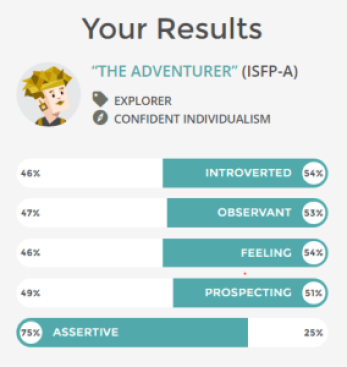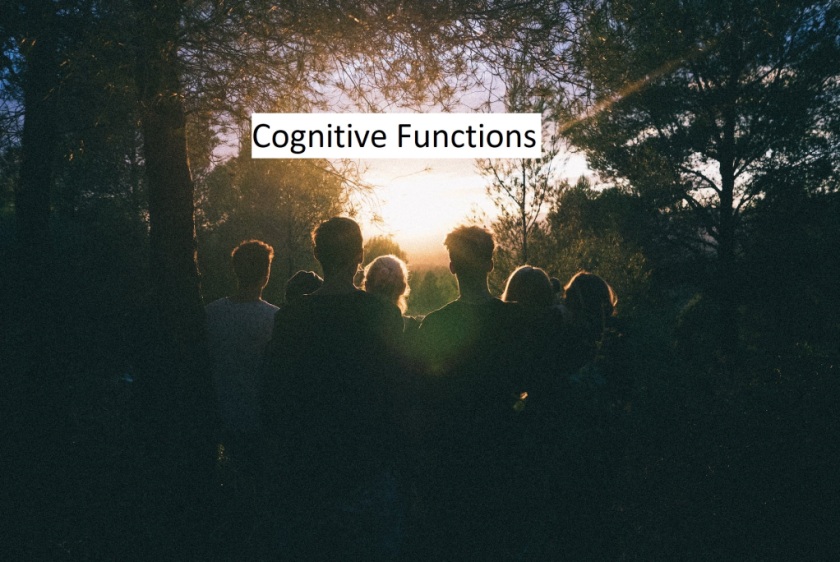The Myers Briggs Type Indicator (MBTI) is one of the most popular personality tests and frameworks since the 1950s, created by the mother-daughter duo Isabel Myers and Catherine Briggs. Officially licensed under the Myers Briggs Company, the MBTI becomes even more popular due to the proliferation of (questionable) free online tests and generic type descriptions, often known as 16P or 16-personality test.
Why You Should Go Beyond Tests and Type Descriptions

As a result, there are generally two levels of understanding that we have seen. In the first group are those who came across the popular 16P personality quiz, or similar sites like truity.com. These sites peddle a type of personality assessment that simply asks “are you Extroverted or Introverted”, “are you an Intuitive or a Sensor”, “are you a Thinker or a Feeler”, “are you a Judger or a Perceiver” with percentage scores and give you your “MBTI type” based on those results.
It is a dichotomy (“strictly one or the other”) method that leaves much to be desired, because in a dichotomy system, you cannot have balance in your capability for sensing/intuition, or thinking/feeling. The end result is that many test-takers feel like they do not fit the extreme definitions of “introvert” / “extrovert” / “thinker” / “feeler”, because naturally every person is a bit introverted at times, a bit extroverted at times, and uses logic and inner values depending on the situation at hand.

In the second group are those who look further back to the origins of the modern MBTI, to the original theory introduced by Carl Jung in his 1921 book “Psychological Types” and expanded by Jungian analysts like John Beebe. Based on this theory, all our psychological thought processes can be categorized into 8 different cognitive functions.
This group also recognizes sixteen different types, but organizes each of the sixteen types by a unique combination of these 8 cognitive functions. It is a more holistic and nuanced understanding of personality types that accounts for the fact that everyone has a bit of everything, and the difference between types lies in the different order of strengths and weaknesses.
Here’s where the confusion arises: both groups have 16 types with the same 16 names, but a very different and incompatible understanding of what defines each of those 16 personality types.

We are firmly in the second group, and we have seen that generally, people in the first group who start to learn about cognitive functions will almost always “see the light” and join the second group, seeing the types through the lens of cognitive functions rather than the simple dichotomies.
Once a person sees the more robust and comprehensive system, they will naturally accept it over the simplistic dichotomies. In writing this post, I hope to bring you from the shallow pools of the 16P and truity.com to the real nuts and bolts of Jung’s theory of personality!
What are Jungian/MBTI cognitive functions?
Perception can be done in two ways; it can be in the present, the “here and now” (Sensing) and it can be looking beyond into the future and inferring patterns beneath the surface (Intuition)

On the other hand, judgement can be also done in two ways; it can be done for quantifiable things, judging value between two black-and-white comparisons (Thinking). It can be also be done for unquantifiable things, judging value in aspects like love or personal values (“do I love Alice or Bob more?”) (Feeling)
So as a result, we have 4 functions (Sensing, Intuition, Thinking, Feeling) and for each of these four functions , there is an introverted and an extroverted version.

The extroverted functions are oriented outwards towards the external world, they are:
- Extroverted Sensing (Se): Enjoying the finer aspects of life in food, fashion. Being physically in tune with the world
- Extroverted Intuition (Ne): From one observation, deriving ten different ideas and possibilities
- Extroverted Thinking (Te): Real-world practicality, results-driven, things that can be written down on a resume
- Extroverted Feeling (Fe): Being able to “read the room”, attuned to the social atmosphere, tailoring your words to your audience
The introverted functions are oriented inwards towards the subjective personal world
- Introverted Sensing (Si): Seeing and remembering things as they were in the past, taking things step by step
- Introverted Intuition (Ni): From ten observations, deriving one single theory that explains everything. Projecting the one future path that most likely will happen
- Introverted Thinking (Ti): Logical and consistent, having various categories to ensure that everything has its own place in a water-tight system
- Introverted Feeling (Fi): Having a clear idea of individual desires, values, tastes. Living life authentically without being affected by what the rest of the world does
A more detailed explanation of each of the functions can be found here.

How to determine the Function Stack of an MBTI Type?
- A person’s combination of functions (i.e. the function stack) can’t simply be randomly picked from the list of 8 functions (otherwise we would have 8^8 = 16,777,216 types! There are commonly accepted rules for the positions and pairings of the functions developed by readers of Jung such as Myers Briggs and John Beebe.
- Each function has a partner: its “opposite” within the same Judging/Perceiving category.
- Perceiving function pairs
- Introverted Intuition (Ni) + Extroverted Sensing (Se) Contextual
- Extroverted Intuition (Ne) + Introverted Sensing (Si) Universal
- Judging Function Pairs
- Introverted Feeling (Fi) + Extroverted Thinking (Te) Contextual
- Extroverted Feeling (Fe) + Introverted Thinking (Ti) Universal
- Perceiving function pairs
- Every person’s first four function slots are comprised of one Perceiving function pair and one Judging function pair
- Thus four possible combinations; there are four different ways to pair one Perceiving function pair with one Judging function pair
| Democratic | Theocratic |
| Ne/Si + Fi/Te | Ni/Se + Fe/Ti |
| Atomic | Monarchic |
| Ne/Si + Fe/Ti | Ni/Se + Fi/Te |
- Within a person’s first four function slots, one function pair will occupy the 1st (“Dominant”) and 4th (“Inferior”/”Primitive”) slots. The other function pair will occupy the 2nd (“Auxiliary”) and 3rd (“Tertiary”) slots
- Between the Dominant and Auxiliary Functions,
- There is one extroverted and one introverted
- There is one perceiving (N/S) and one judging (T/F)
To put everything together, here is an example of how we determine the functions of the ENFP type:
Step 1: Determine the orientation of the dominant function:
First letter tells you the orientation of the dominant function
The first letter “E” means Dominant function is Extroverted
|
Position |
Orientation |
Function |
|
Dominant |
Extroverted |
(Intuition or Sensing or Thinking or Feeling) |
|
Auxiliary |
(Introverted or Extroverted) |
(Intuition or Sensing or Thinking or Feeling |
because the dominant function is Extroverted, the Auxiliary function must be Introverted
|
Position |
Orientation |
Function |
|
Dominant |
Extroverted |
(Intuition or Sensing or Thinking or Feeling) |
|
Auxiliary |
Introverted |
(Intuition or Sensing or Thinking or Feeling |
Step 2: Use the fourth letter narrows down the extroverted function
Fourth letter “P” means the Extroverted function is a Perceiving function (either N or S)
|
Position |
Orientation |
Function |
|
Dominant |
Extroverted |
(Intuition or Sensing) |
|
Auxiliary |
Introverted |
(Intuition or Sensing or Thinking or Feeling) |
because the Extroverted function is a Perceiving function, the Introverted function must be a Judging function (T or F)
|
Position |
Orientation |
Function |
|
Dominant |
Extroverted |
(Intuition or Sensing) |
|
Auxiliary |
Introverted |
(Thinking or Feeling) |
Step 3: Use the second letter to decide whether the person is “Intuition” or “Sensing”
ENFP: “N” stands for Intuition rather than Sensing
|
Position |
Orientation |
Function |
|
Dominant |
Extroverted |
Intuition |
|
Auxiliary |
Introverted |
(Thinking or Feeling) |
Step 4: Use the third letter to decide whether the person is “Thinking” or “Feeling”
ENFP: Letter F stands for Feeling rather than Thinking
|
Position |
Orientation |
Function |
|
Dominant |
Extroverted |
Intuition |
|
Auxiliary |
Introverted |
Feeling |
Step 5: Determine the tertiary function
Each function has a partner: its “opposite” within the same Judging/Perceiving category.
The Tertiary is simply the function pair of the Auxiliary
|
Position |
Orientation |
Function |
|
Dominant |
Extroverted |
Intuition |
|
Auxiliary |
Introverted |
Feeling |
|
Tertiary |
Extroverted |
Thinking |
Step 6: Determine the inferior function
The Inferior/Primitive is simply the function pair of the Dominant
|
Position |
Orientation |
Function |
|
Dominant |
Extroverted |
Intuition |
|
Auxiliary |
Introverted |
Feeling |
|
Tertiary |
Extroverted |
Thinking |
|
Inferior / Primitive |
Introverted |
Sensing |
Do you get it? Why not try to apply the same process above to determine the top four cognitive functions of your MBTI function stack? For a quick cheat sheet to look up different types’ stacks, click here.
So I hope you have had a better understanding of the other “deeper” aspect of MBTI and the commonly accepted model of the function stack in each type. This will unlock a more in-depth level of self-understanding for yourself based on your type.
The next step is to relook at your specific function stack and familiarize yourself with the definition and usage of each of these functions. Then, you can reflect on how these functions manifest in your life, then learn the theory further, and repeat. It will be a fulfilling and amazing journey of self-discovery with the aid of MBTI and Jungian functions!
References
- Myers, Isabel Briggs, and Peter B. Myers. Gifts differing: Understanding personality type. Consulting Psychologists Press, 1980.
- Beebe, John. Energies and patterns in psychological type: The reservoir of consciousness. Routledge, 2016.
- Jung, Carl. Psychological types. Routledge, 2016.
This was a guest article written by CS Ng. For more content from the author, check out here.
A more detailed explanation by him on the function stack can be found here.

